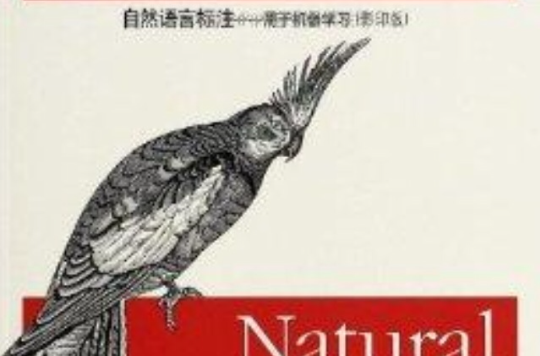基本介紹
- 書名:自然語言標註:用於機器學習
- 作者:普斯特若夫斯基 (James Pustejovsky) 斯塔布斯 (Amber Stubbs)
- 出版社:東南大學出版社
- 頁數:324頁
- 開本:16
- 品牌:南京東南大學出版社
- 外文名:Natural Language Annotation for Machine Learning
- 類型:計算機與網際網路
- 出版日期:2013年6月1日
- 語種:簡體中文, 英語
- ISBN:7564142812
基本介紹
內容簡介
作者簡介
是Brandeis大學的教授,他在該大學的計算機科學系講解和研究人工智慧及計算語言學。剛剛獲得了Brandeis大學標註方法論的博士學位。她現在是SUNYAlbany大學的博士後
圖書目錄
1. The Basics
The Importance of Language Annotation
The Layers of Linguistic Description
What Is Natural Language Processing?
A Brief History of Corpus Linguistics
What Is a Corpus?
Early Use of Corpora
Corpora Today
Kinds of Annotation
Language Data and Machine Learning
Classification
Clustering
Structured Pattern Induction
The Annotation Development Cycle
Model the Phenomenon
Annotate with the Specification
Train and Test the Algorithms over the Corpus
Evaluate the Results
Revise the Model and Algorithms
Summary
2. Defining Your Goal and Dataset
Defining Your Goal
The Statement of Purpose
Refining Your Goal: Informativity Versus Correctness
Background Research
Language Resources
Organizations and Conferences
NLP Challenges
Assembling Your Dataset
The Ideal Corpus: Representative and Balanced
Collecting Data from the Internet
Eliciting Data from People
The Size of Your Corpus
Existing Corpora
Distributions Within Corpora
Summary
3. Corpus Analytics
Basic Probability for Corpus Analytics
/oint Probability Distributions
Bayes Rule
Counting Occurrences
Zipf's Law
N—grams
Language Models
Summary
4. Building Your Model and Specification
Some Example Models and Specs
Film Genre Classification
Adding Named Entities
Semantic Roles
Adopting (or Not Adopting) Existing Models
Creating Your Own Model and Specification: Generality Versus Specificity
Using Existing Models and Specifications
Using Models Without Specifications
Different Kinds of Standards
ISO Standards
Community—Driven Standards
Other Standards Affecting Annotation
Summary
5. Applying and Adopting Annotation Standards
Metadata Annotation: Document Classification
Unique Labels: Movie Reviews
Multiple Labels: Film Genres
Text Extent Annotation: Named Entities
Inline Annotation
Stand—off Annotation by Tokens
Stand—off Annotation by Character Location
Linked Extent Annotation: Semantic Roles
ISO Standards and You
Summary
6. Annotation and Adjudication
The Infrastructure of an Annotation Project
Specification Versus Guidelines
Be Prepared to Revise
Preparing Your Data for Annotation
Metadata
Preprocessed Data
Splitting Up the Files for Annotation
Writing the Annotation Guidelines
Example 1: Single Labels——Movie Reviews
Example 2: Multiple Labels——Film Genres
Example 3: Extent Annotations——Named Entities
Example 4: Link Tags——Semantic Roles
Annotators
Choosing an Annotation Environment
Evaluating the Annotations
Cohen's Kappa (K)
Fleiss's Kappa (K)
Interpreting Kappa Coefficients
Calculating K in Other Contexts
Creating the Gold Standard (Adjudication)
Summary
7. Training: Machine Learning
What Is Learning?
Defining Our Learning Task
Classifier Algorithms
Decision Tree Learning
Gender Identification
Naive Bayes Learning
Maximum Entropy Classifiers
Other Classifiers to Know About
Sequence Induction Algorithms
Clustering and Unsupervised Learning
Semi—Supervised Learning
Matching Annotation to Algorithms
Summary
8. Testinq and Evaluation
9. Revising and Reporting
10. Annotation: TimeML
11. Automatic Annotation: Generating TimeML
A. List of Available Corpora and Specifications
B. List of Software Resources
C. MAE UserGuide.
D. MAI UserGuide
E. Bibliography
Index
名人推薦
——Nancy IdeVassar學院的計算機科學教授

